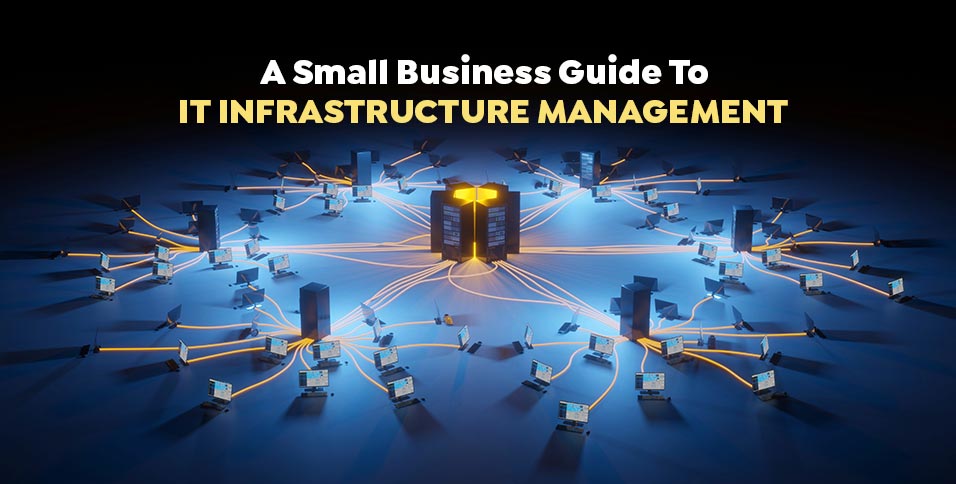Information technology (IT) infrastructure is one of the backbones of any small business. It includes the hardware, software, and networks that enable a company to operate efficiently and reliably. For a small business, having the proper IT infrastructure is vital for success. But with expanding technological scope, businesses may fall short of proper IT management.
IT infrastructure management is the administration of a company’s IT systems. This includes planning, designing, maintaining, and supporting networks, servers, policies, storage systems, firewalls, and other computing infrastructure. It also involves guaranteeing that these components are properly integrated and functioning correctly.
Here’s a guide to help small businesses manage their IT infrastructure:
1. Use Managed Services Providers
Small businesses often need more resources and expertise to manage their IT infrastructure. One solution to this problem is to use managed services, which involve outsourcing IT tasks to a third-party provider. You can either outsource the whole or part of your IT infrastructure depending on the resources and skills you have or need. For example, you can source IT services in Seattle if your business needs cybersecurity and cloud services.
Managed services can include network monitoring, data backup, and software updates. Small businesses can benefit from IT professionals’ expertise using managed services without hiring an in-house team. This can reduce costs and improve the efficiency of IT operations. Plus, managed services providers often offer flexible pricing models, benefiting small businesses with fluctuating IT needs.

2. Prepare For Increased Workload
Small businesses often need more resources to manage their IT infrastructure. Small businesses can implement a few strategies to prepare for an increased workload. First, you can evaluate their current IT infrastructure and identify any areas that require improvement. This may include upgrading hardware and software, improving network security, and implementing data backup and recovery solutions.
You can also invest in scalable solutions such as cloud computing and virtualization, which can help manage an increased workload. Furthermore, you should streamline their IT operations by automating tasks such as software updates and backups. This can free up resources to focus on more complex tasks while reducing the risk of downtime and errors.
3. Develop Security Policies
Small businesses are increasingly vulnerable to cyber threats due to the proliferation of digital technology. As a result, you need to protect your IT infrastructure by developing comprehensive security policies. This should include measures such as password management, two-factor authentication, and encryption of sensitive data. Additionally, businesses should invest in robust firewalls and antivirus software to help protect against malicious attacks.
Security policies set forth guidelines and processes to protect confidential data and systems against unauthorized access, utilization, exposure, interference, alteration, or eradication. By establishing security policies, small businesses can guarantee that employees know the risks and how to mitigate them. It is essential to regularly review and update these policies to keep up with the latest threats and technologies.
4. Ensure Legal And Regulatory Compliance
Small businesses must ensure legal and regulatory compliance to manage their IT infrastructure effectively. Compliance with laws and regulations is essential to protect the business and its customers from legal and financial consequences. Small businesses should first identify the laws and regulations that apply to their business, such as data protection or industry-specific regulations. They should assess their IT infrastructure to ensure it meets the required standards.
This may involve implementing security measures, conducting regular audits and assessments, and ensuring that all software and hardware are current. It is also essential for small businesses to stay compliant with regulatory changes that may affect their IT infrastructure and make necessary adjustments accordingly. By taking a proactive approach to legal and regulatory compliance, small businesses can mitigate potential risks and ensure the longevity of their IT infrastructure.
5. Develop A Maintenance Plan
Small businesses rely heavily on their IT infrastructure to operate efficiently and compete in today’s digital age. However, many of these businesses need to pay more attention to having a maintenance plan for their IT systems. With regular maintenance, IT infrastructure can become updated, efficient, and vulnerable to security threats, resulting in costly downtime and data loss.
By implementing a maintenance plan, small businesses can guarantee that their IT systems remain updated, secure, and running smoothly. A communication channel should also be in place for reporting incidents and ensuring minimum disruptions. Regular maintenance can also help identify potential issues before they become major problems, saving time and money in the long run. Plus, a well-maintained IT infrastructure can enhance productivity, boost employee morale, and improve customer satisfaction. All of these can contribute to the business’s overall success.
6. Invest In Disaster Recovery
A disaster recovery plan is critical for small businesses to return to operations immediately. Disasters such as power outages, hardware failures, and cyber-attacks can be detrimental to any company’s operations, leading to lost revenue, damaged reputation, and even closure. Enabling disaster recovery can help mitigate the impact of these events by ensuring that their critical data and systems are backed up and can be quickly restored in the event of a disruption.
Your business can set measures such as regular data backups, redundant hardware and software systems, and a comprehensive disaster recovery plan that outlines the steps to be taken in an emergency. Investing in disaster recovery can give small businesses the peace of mind that their IT infrastructure is secure and can withstand unexpected events. This will enable you to focus on their core operations and drive business growth.
7. Train Employees
Small businesses should invest in training their employees on the proper use and maintenance of IT infrastructure. Training can help employees understand the business’s security protocols, data protection policies, and disaster recovery procedures. It is also necessary to educate employees on the risks of using insecure networks or devices and how to prevent data breaches, malware attacks, and other security threats.
By equipping employees with the necessary knowledge and skills to handle IT infrastructure responsibly, small businesses can reduce the likelihood of costly incidents. This can also help guarantee an updated and secure system. Training employees on IT infrastructure management is imperative to running a successful brand in today’s digital-driven business landscape.
Conclusion
Small businesses must take IT infrastructure management seriously to stay competitive and protect their data. These measures can also help maximize productivity, boost morale, and improve customer satisfaction while ensuring compliance with laws and regulations. With proper IT infrastructure management, small businesses can drive their operations and remain competitive in today’s digital age.
Also Read: 5 Steps To Build A Risk Management Plan















